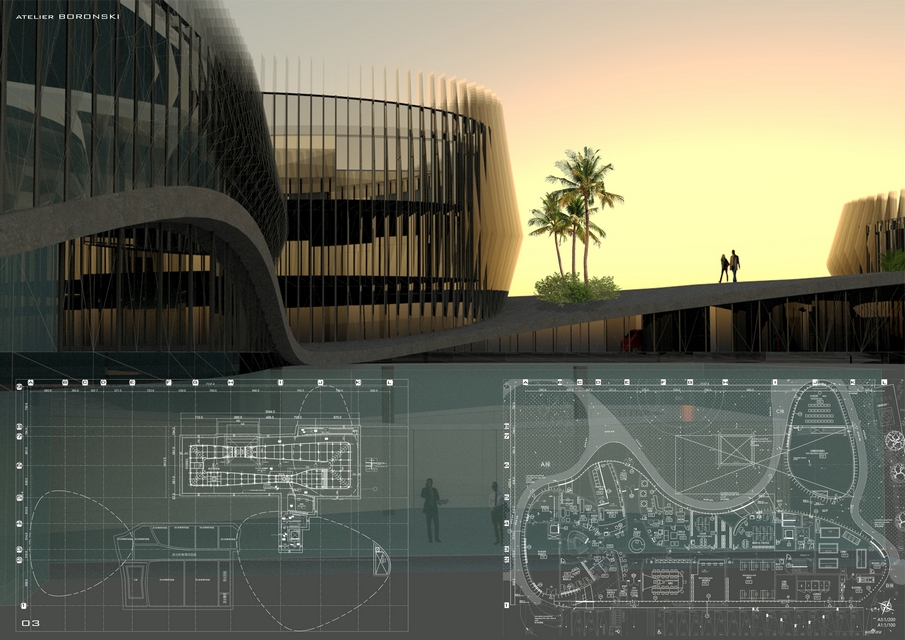Xindian Meteorological Center || atelier BORONSKI || Architect of the Year Awards 2020
atelier BORONSKI: Winner of Architect of the Year Awards 2020. The Earth’s weather is a consequence of its illumination by the Sun, and the laws of thermodynamics. The atmospheric circulation can be viewed as a heat engine driven by the Sun’s energy.
The large-scale movement of air, together with ocean circulation, is the means by which thermal energy is redistributed on the surface of the Earth.
The smaller-scale movement of cyclones occurs more randomly, as a circulatory system connected by the vertical movement of airflow – viewed as cloud by meteorological satellite.
The circular trajectory of the winds forms a beautiful maelstrom.
In the observation of weather, atmospheric pressure occupies a critical position.
The pressure values observed by weather stations around the world are drawn as isobars.
The configuration of isobars expresses the position of high and low pressure on the earth’s surface.
The architectural plan is formed by the confluence of these isobars.
The change of air pressure is closely related to our weather system.
The airflow in a low-pressure area is from the periphery to the center.
After converging at the central zone of low pressure, it rises to the upper atmosphere.
Spreading and cooling, it falls back to earth.
The concept of the building volume is based on low air pressure and high
vertical movement of airflow generated by the circular figure of air pressure convergence.
The circular form is a direct representation of this phenomenon.
The vertical fins that radiate from the circular building volumes are effective as shading devises,
but they are also hinged. The flexible sheets of translucent urethane are designed to move with the breeze.
This is a strategy to directly connect the building to the environment.
The three volumes are connected through the concept of fluid natural curves like the surface of the earth, forming a cluster of random but cohesive volumes.
By placing the wind tunnel below ground, we minimized noise pollution and maximized the green areas of the site.
Both conceptually and literally this building is connected to the phenomena it seeks to negotiate.
By integrating the natural environment with landscape and architecture, we sought to design a building in harmony with the environment.
Firm || atelier BORONSKI
Project Name || Xindian Meteorological Center
Architect || Peter Boronski
Architect of the Year Award Category || Institutional Building Concept
Project Location || New Taipei City
Team || atelier BORONSKI, UZ Architects, IMO Architecture + JC Cheng and Associates
Country || Japan
Photography ©Credit || ©CG images copyright – atelier BORONSKI
![]()
Atelier BORONSKI is a bilingual design office based in Kyoto and directed by a New Zealand born architect educated in both New Zealand and Japan.
After representing New Zealand in sports Peter Boronski studied Architecture at Auckland University and graduated with first class honors. With a Japanese Government scholarship he completed post-graduate studies at Kyoto University in 1996. He has received design awards in New Zealand, Japan and Taiwan. His works have been published in eight different languages and in over twelve different countries. Projects of atelier BORONSKI have been featured on the covers of architectural journals in Italy, Germany, Korea, India and Taiwan. He has been a guest critic at several universities in Japan and New Zealand and has held the position of part-time lecturer at Kyoto University.










